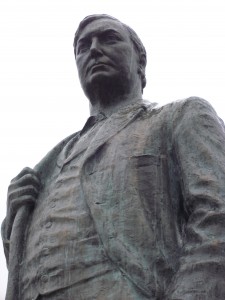In a post on Saturday (In Defense of “For-Profit” Education), I described my experience as an instructor at one of the leaders in for-profit education, ITT Technical Institute. I called it an “educational sweatshop,” a characterization which probably says more about the lackadaisical teaching demands of typical institutions of higher education than about the hard working instructors at ITT Tech. I noted that ITT Tech (in my limited experience) has more faculty than administrators and staff, in contract to typical non-profit, government-subsidized institutions of higher education. The curriculum, at least in the two-year electronics technician program in which I taught, is highly relevant, and I use the concepts I taught at ITT Tech all the time in my work as CTO of a high tech start-up company. The curriculum was centralized to the point of standardized final exams for ITT Tech campuses across the country. In short, I characterized ITT Tech as the “McDonalds of Higher Education.” It may not be a “gourmet” education, but the product is consistent and generally of good quality and good value. As an employer who now hires electronics technicians, I trust a technician who has graduated from ITT Tech to more likely than not be competent.
For-profit higher education has been getting a bad rap lately. Encouraged by easy federal student loan money, many non-traditional students flock to outfits like ITT Tech for career-focused training in hopes of making a better life for themselves. Many are ill-prepared for the classroom setting. Some overcome their poor preparation with the determination to work hard and succeed. Others are poorly motivated or overwhelmed by factors outside the classroom and fail. Those who fail will have accumulated debt they can ill-afford to pay back. Those who succeed will usually land well-paying jobs that allow them to pay back their loans.
Just as the housing bubble inflated in response to the government’s policy of encouraging home loans with little regard to ability to pay back the loan, so also has an education bubble inflated in response to government subsidies of student loans without proper attention paid to the ability of students to secure gainful employment as a result of their education and pay back the loan. In response to this easy money, the price of a higher education has soared far in advance of prices in other areas. ITT Tech is not part of the underlying problem, although the company and its shareholders have greatly benefited from easy credit for educational loans. Many of the low-cost, high-efficiency education methods pioneered in the for-profit sector are ultimately part of the solution to high education prices.
In the middle of all this for-profit education controversy, I’m troubled that no one seems to be asking the obvious question: how can ITT Tech make spectacular profits educating the same students with the same loan packages that public schools require government subsidy to teach? The answer is clear: for-profit schools have low overhead, streamlined operations, and highly efficient business methods. Public schools tend to have bloated and expensive bureaucracies run for the convenience and enrichment of the administration and faculty. It’s no wonder that the former makes spectacular profits while the later requires additional subsidy.
There are historical precedents for entrepreneurial businesses out-performing their government-subsidized competition. Burton Folsom tells several such stories in his book: Entrepreneurs Versus the State, later reprinted as The Myth of the Robber Barons: A New Look at the Rise of Big Business in America. A brief summary is available online in several places.
To encourage trade and commerce, Congress chose to subsidize steamship lines in the 1840s. Cornelius Vanderbilt offered to provide the same service as his subsidized competitor, Edward Collins, for half the $700,000 subsidy. Congress refused Vanderbilt’s offer and continued subsidizing the politically connected Collins. Vanderbilt decided to offer trans-Atlantic service in direct competition with his subsidized competitor. So inefficient was Collins that Vanderbilt ultimately prevailed despite subsidies to Collins totaling $11,000,000 (5% of the then National Debt, and the equivalent of over $200,000,000 today). Not having learned the lesson from their disastrous subsidy of steamboat lines, Congress provided substantial subsidies to transcontinental railways. Every subsidized railway ultimately went bankrupt – some multiple times. The only transcontinental railway not to go bankrupt was James J. Hill’s Great Northern – the only line not subsidized. In an illustration of the principle that history repeats itself, the Government also backed Samuel Langley’s experiments in powered flight – at the same time the Wright Brothers’ privately funded effort began to soar.
In this sense, for-profit institutions are the “Robber Barons of Higher Education:” they are out-competing their government-subsidized competition, and winning.


